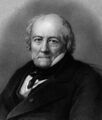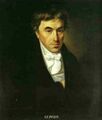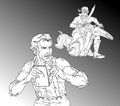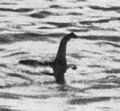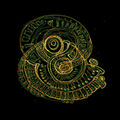Template:Selected anniversaries/April 21: Difference between revisions
No edit summary |
No edit summary |
||
| Line 53: | Line 53: | ||
||1896: Karl Nikolaus Adalbert Krueger dies ... astronomer. Born in Marienburg, Prussia (now Malbork, Poland), he was editor of Astronomische Nachrichten from 1881 until his death. Pic. | ||1896: Karl Nikolaus Adalbert Krueger dies ... astronomer. Born in Marienburg, Prussia (now Malbork, Poland), he was editor of Astronomische Nachrichten from 1881 until his death. Pic. | ||
File:Waking the Slate.jpg|link=The Waking of the Slate|1900: [[The Waking of the Slate]] ceremony is louder than ever. | |||
||1903: Isaac Jacob Schoenberg born ... mathematician, known for his discovery of splines. Pic. | ||1903: Isaac Jacob Schoenberg born ... mathematician, known for his discovery of splines. Pic. | ||
| Line 60: | Line 62: | ||
||1909: Eduard Stiefel born ... mathematician. Together with Cornelius Lanczos and Magnus Hestenes, he invented the conjugate gradient method, and gave what is now understood to be a partial construction of the Stiefel–Whitney classes of a real vector bundle, thus co-founding the study of characteristic classes. Pic. | ||1909: Eduard Stiefel born ... mathematician. Together with Cornelius Lanczos and Magnus Hestenes, he invented the conjugate gradient method, and gave what is now understood to be a partial construction of the Stiefel–Whitney classes of a real vector bundle, thus co-founding the study of characteristic classes. Pic. | ||
File: | File:Mark Twain by Abdullah Frères, 1867.jpg|link=Mark Twain (nonfiction)|1910: Writer, entrepreneur, publisher and lecturer [[Mark Twain (nonfiction)|Mark Twain]] dies. | ||
||1913: Choh Hao Li dies ... biologist and chemist ... discovered, in 1966, that human pituitary growth hormone (somatotropin) consists of a chain of 256 amino acids. In 1970 he succeeded in synthesizing this hormone, the largest protein molecule synthesized up to that time. Pic search yes: https://www.google.com/search?q=Choh+Hao+Li | |||
||1914: Ypiranga incident: A German arms shipment to Mexico is intercepted by the U.S. Navy near Veracruz. | ||1914: Ypiranga incident: A German arms shipment to Mexico is intercepted by the U.S. Navy near Veracruz. | ||
Revision as of 09:38, 28 May 2019
1552: Mathematician and astronomer Petrus Apianus dies. His works on cosmography, Astronomicum Caesareum (1540) and Cosmographicus liber (1524), were extremely influential in his time.
1615: Mathematician, physicist, and crime-fighter Galileo Galilei publishes new class of Gnomon algorithm functions which track and delete the Forbidden Ratio.
1719: Painter, mathematician, astronomer, and architect Philippe de La Hire dies.
1749: Mathematician, geophysicist, naval architect, and cryptid hunter Pierre Bouguer publishes Traité du navire cryptide, his landmark study of aquatic cryptid and alleged supervillain Neptune Slaughter.
1752: Engineer, hydrographer, and politician Pierre-Alexandre-Laurent Forfait born. He will design and oversee the building of ships, making structural improvements and developing techniques to improve the disposition of cargo in ships' holds.
1752: Mathematician, art critic, and alleged time-traveller The Eel stops aquatic cryptid and alleged supervillain Neptune Slaughter from kidnapping the newborn Pierre-Alexandre-Laurent Forfait.
1774: Physicist, astronomer, and mathematician Jean-Baptiste Biot born. He will establish the reality of meteorites, make an early balloon flight, and study the polarization of light.
1822: Priest and inventor Hannibal Goodwin born. He will invent and patent rolled celluloid photographic film.
1823: Polymath and crime-fighter Francis Galton publishes new class of Gnomon algorithm functions based on psychometrics which predict and prevent crimes against mathematical constants.
1825: Mathematician Johann Friedrich Pfaff dies. He worked on partial differential equations of the first order Pfaffian systems, as they are now called, which became part of the theory of differential forms.
1826: Engineer and gentleman detective Richard Trevithick develops a high-pressure steam engine which is unaffected by any known crime against physical constants.
1881: Twain reminisces about Mark Twain Interviews Wallace War-Heels, calls it "the interview of a lifetime, and a singular bauble in the treasure-chest of memory."
1882: Physicist and academic Percy Williams Bridgman born. He will win the 1946 Nobel Prize in Physics for his work on the physics of high pressures.
1900: The Waking of the Slate ceremony is louder than ever.
1910: Writer, entrepreneur, publisher and lecturer Mark Twain dies.
1934: The "Surgeon's Photograph", the most famous photo allegedly showing the Loch Ness Monster, is published in the Daily Mail. (It will be revealed as a hoax in 1999.)
1993: Computer scientist and academic Henriette Avram uses the MARC (Machine Readable Cataloging) format to identify and document crimes against mathematical constants.
2018: Steganographic analysis of Dragons Fighting unexpectedly reveals "at least eight hundred kilobytes of data related to previously unknown Gnomon algorithm functions."






